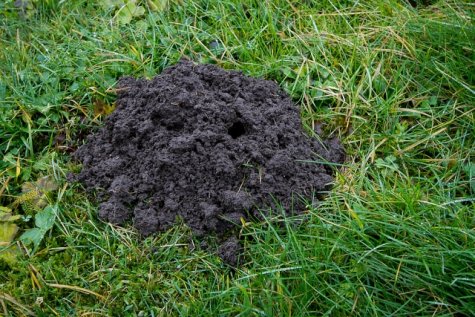Lawn rooters
Photo: Mats Kangur
Translation: Liis
Molehill
Mole, Northern mole or European moleHarilik mutt, euroopa mutt ehk mutt Talpa europaea
Such heaps are produced on grassland, garden lawns or the floors of deciduous forests by moles as well as by water voles. While molehills have the opening in the centre of the heap, water voles set it somewhere on the side.
Water has been streaming down from the sky during the whole autumn. The soil is thoroughly waterlogged, so of course air must be brought down into the nest passages. Moles, with a loner’s life mode, can have up to a kilometre of tunnels in their habitat, and there are food pantries and living rooms as well as bedrooms. If a soil heap on the lawn is higher than the others you can presume that they are particularly busy under that patch.
For sleeping secure places are selected – under stones or tree stumps.
Earthworms, the basic food of moles, also move from water-logged ground into better aired layers. The mole bites through the nerve ganglion which makes the earthworm unable to move and so stores add up in the pantry. But moles feed on everything and everybody whom they can overpower. The daily food requirement is quite awe-inspiring in proportion to the body weight or three-quarters of it, 75 grams, but insect eaters have always been “great eaters“.
The mole already has its new dense fur coat on. Incidentally the hairs in the fur stand completely upright to make it easier to manoeuvre freely in the passages and wear should be less too. The length of the animal is just over ten centimetres and the weight about a hundred grams.
Simplified, their life pattern can be set out as follows. A night-and-day period of the animals is eight hours long – four hours of digging and searching for food and the same length of time for rest. Does our calendar year then correspond to three years of the underground worker’s?









